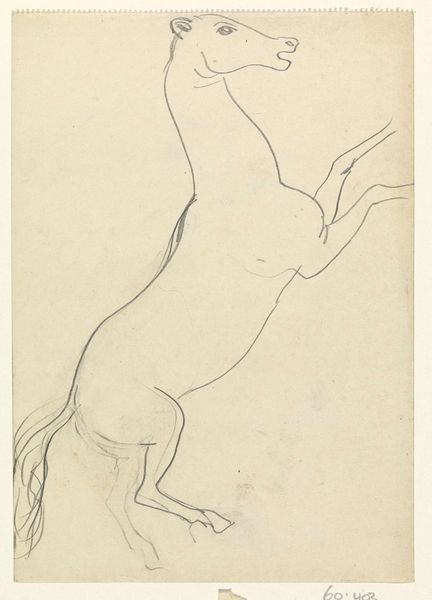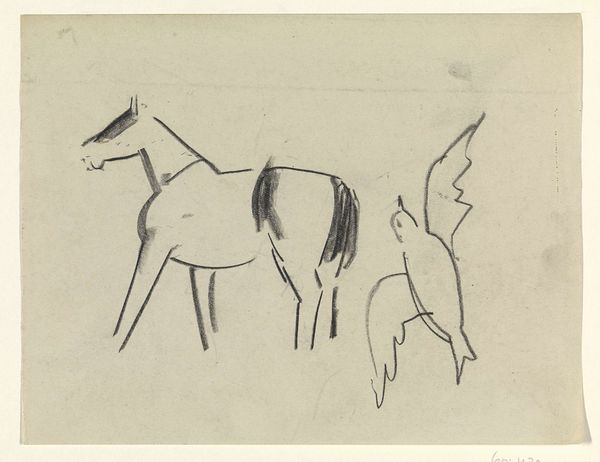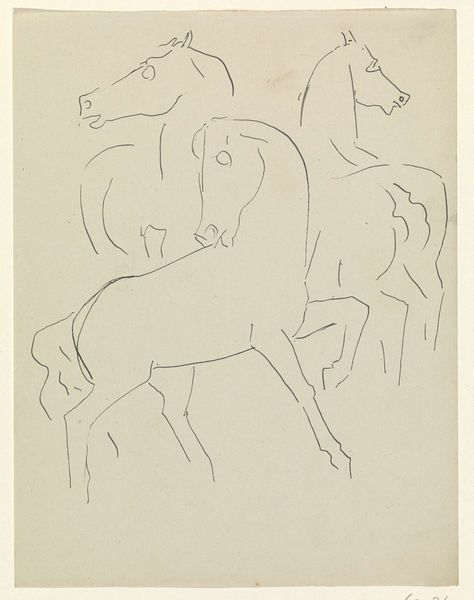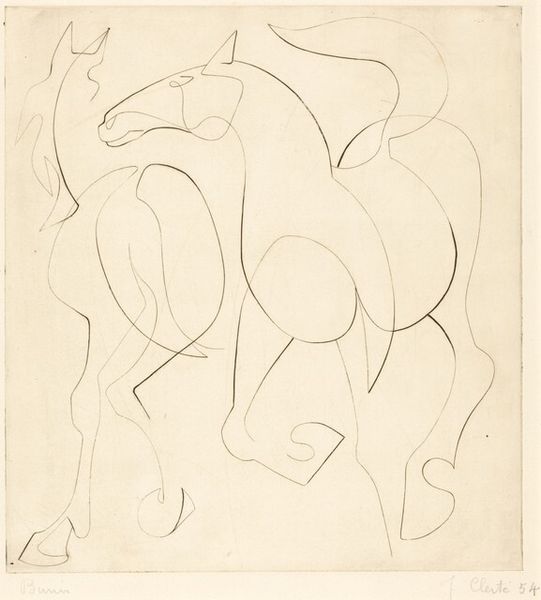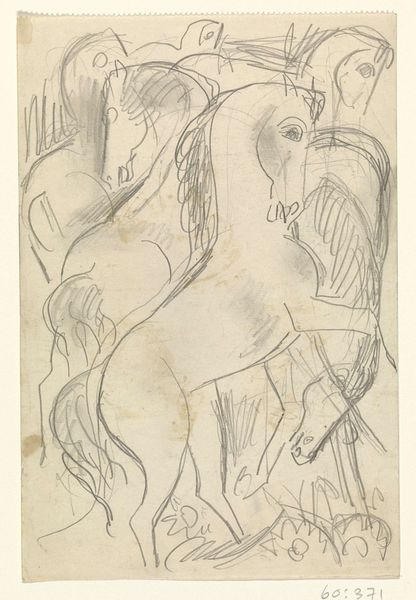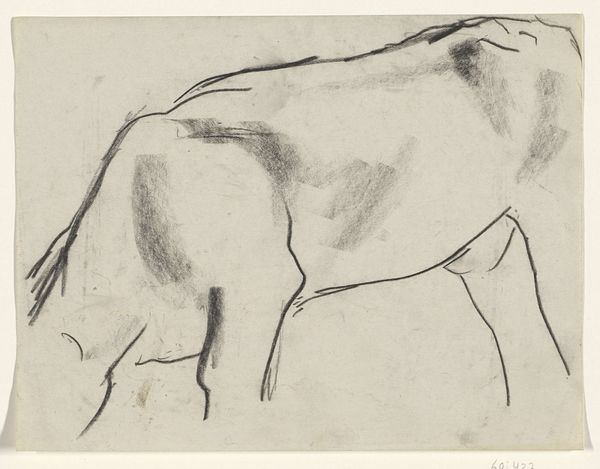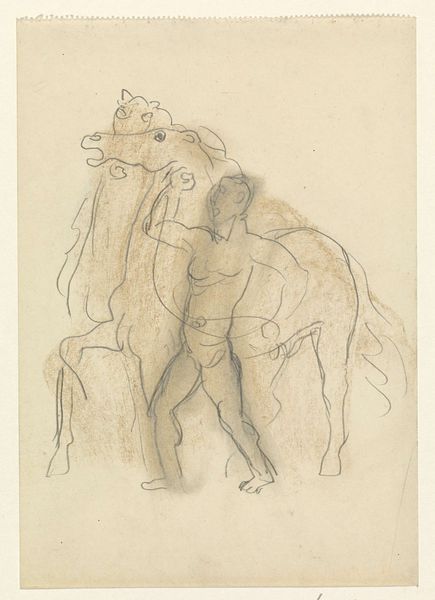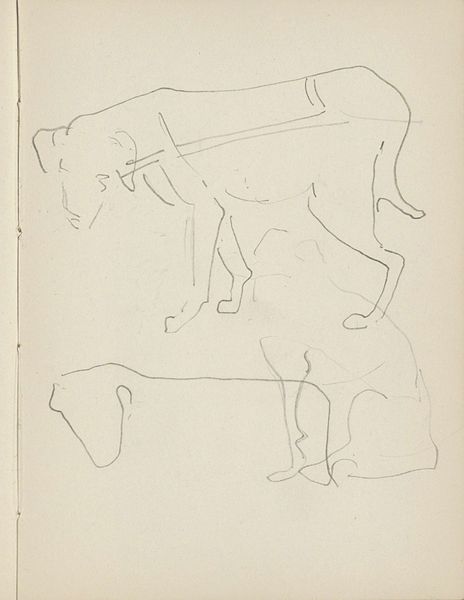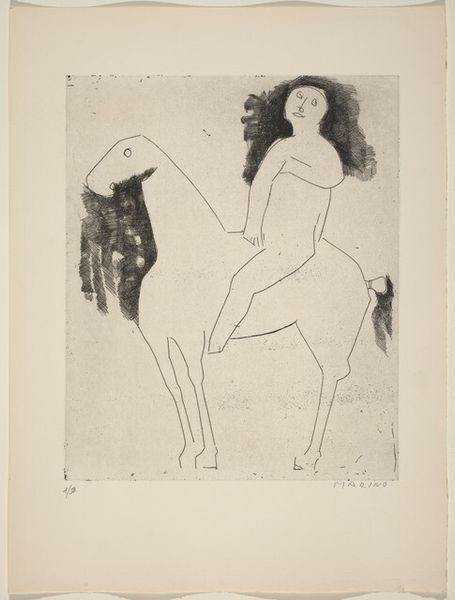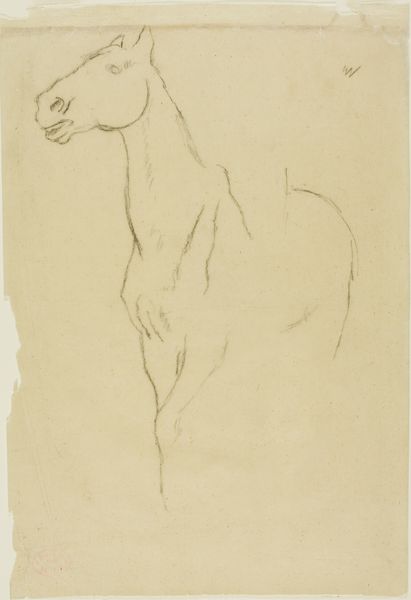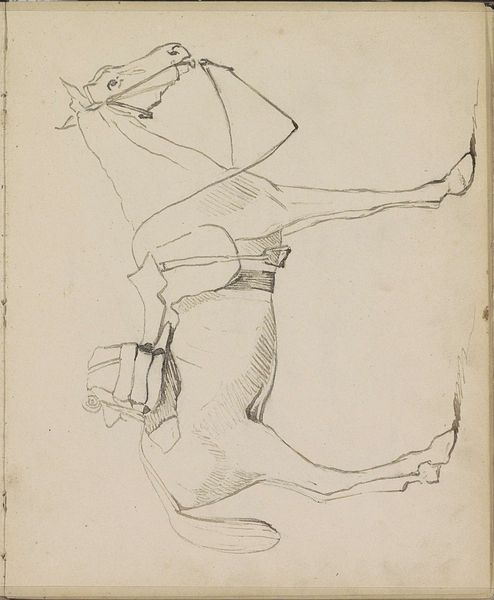
drawing, print, paper, ink
#
abstract-expressionism
#
drawing
# print
#
figuration
#
paper
#
ink
#
modernism
#
erotic-art
Dimensions: plate: 35.8 x 29.8 cm (14 1/8 x 11 3/4 in.) sheet: 51.8 x 38.7 cm (20 3/8 x 15 1/4 in.)
Copyright: National Gallery of Art: CC0 1.0
Curator: Let's discuss Marino Marini's 1955 print, "Invocation." The work, rendered in ink on paper, is part of a limited edition. What strikes you most upon first viewing it? Editor: Its raw, almost childlike quality. The lines are so simple, barely containing the figures, the rider, the horse…there's a frantic energy to its seeming naivete. What medium allows for this spontaneous quality? Curator: Etching, likely, or a similar intaglio printmaking technique. Consider how the ink is bitten into the plate, creating subtle tonal variations, and that texture allows Marini to imbue the stark imagery with layered meanings. Observe how the line and form suggest anxiety and the rider's tense posture as he reaches to the sky. Editor: Exactly, but isn't it interesting how this invocation also hinges on the horse as laboring body? How does the physical strain or possible pleasure experienced by the animal intersect with that human quest? We must think also of the print as commodity – each of the fifty iterations circulate bearing these physical and social tensions. Curator: An important observation! By foregrounding formal distortions, particularly in the horse's skeletal structure and awkward angles, we can examine how Marini creates pictorial drama—a tension embodied by the stark opposition of curves and jagged lines. That contrast gives form to an unresolved conflict, I think. Editor: Yes, and understanding how Marini likely created these prints—the embodied work of plate preparation, inking, and the press’s mechanical action—adds another layer of meaning. In those traces we can almost intuit a collaboration with these means of production themselves. The “erotic” theme the system suggests might not simply point to romantic ideas but to a production-relation! Curator: Perhaps that tension comes from a very material source indeed! Thinking of the relationship between figuration and ground and line quality here illuminates Marini’s exploration of form to reflect postwar anxieties and uncertainties. Editor: I agree. Marini’s work urges us to consider not just the invocation, but the sweat and economics in its physical making. Curator: Indeed. Perhaps by embracing the interplay between materiality and symbolic expression, we can draw more comprehensive insight of what the work has to offer us. Editor: Yes, it calls upon us to invoke production alongside pictorial space in decoding how this art piece creates new and older meanings.
Comments
No comments
Be the first to comment and join the conversation on the ultimate creative platform.
